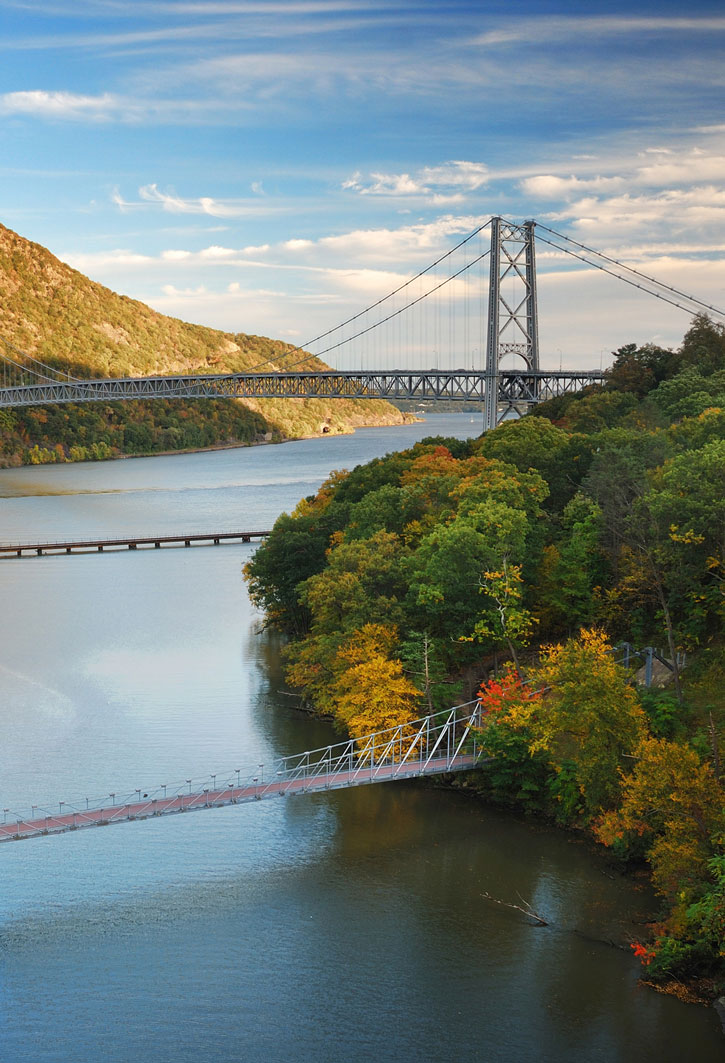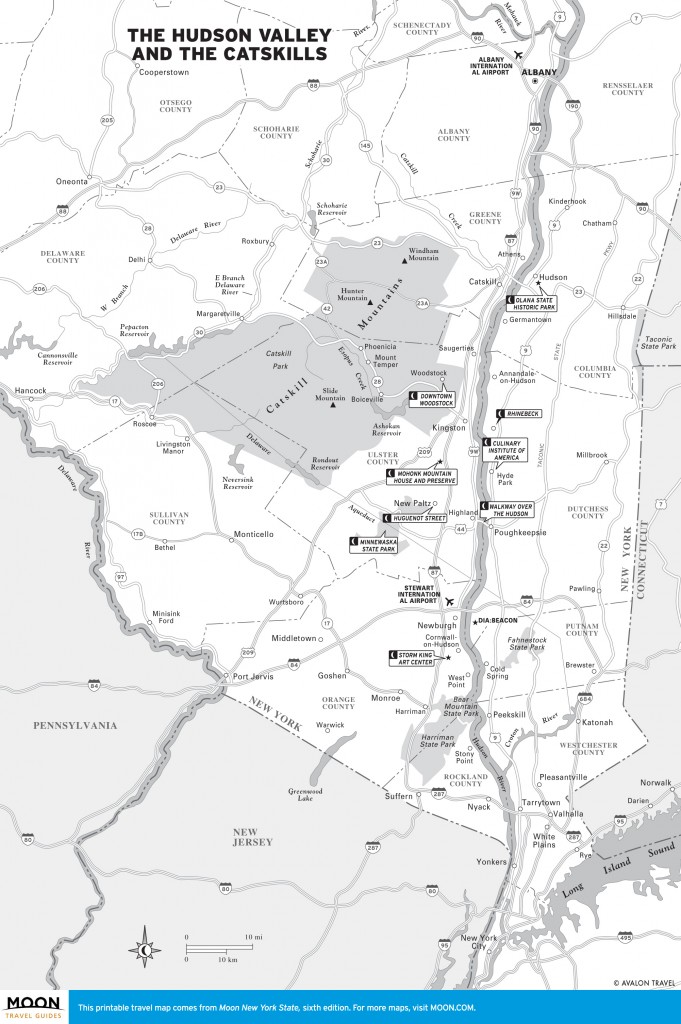But it’s not the first time the region has come en vogue. For nearly four centuries, travelers have ventured up the Hudson River in search of opportunity, inspiration, and a breath of fresh air. It is here that Washington Irving wrote “The Legend of Sleepy Hollow” and Thomas Cole created the landscape paintings that marked the dawn of the romantic era.

The Hudson River in autumn. Photo © Songquan Deng/dreamstime.
Old-world roots, ecological diversity, and an ever-changing economy give the Hudson River Valley the depth and complexity of an aged red wine. Measured by numbers, the river itself is unexceptional—only 315 miles long, 3.5 miles across at its widest point, and 216 feet at its deepest. Carved by a glacier 75 million years ago, the river originates from Lake Tear of the Clouds in the rugged Adirondack Mountains and becomes navigable at Troy, north of Albany. From the Federal Dam at Troy all the way to New York Harbor, the Hudson is a 150-mile-long estuary that ebbs and floods with ocean tides, mixing saltwater with fresh as far up as Kingston in Ulster County. The Algonquins called it “Muhheakantuck,” meaning “the river that flows both ways,” or, “great waters constantly in motion.”
The constant mixing supports the largest single wildlife resource in New York State. Deciduous trees, rocky bluffs, and gentle foothills line both shores. Mallard ducks paddle across narrow inlets, while fishing boats troll for striped bass. Beyond the river’s edge, narrow country lanes lead to historic parks, working fruit and dairy farms, and mountains that stretch 4,000 feet into the sky. From distilleries to farm stays, the valley continues to adapt to changing traveler interests.
At its heart, the Hudson River Valley is a place of contrasts—where dairy farmers mingle with concrete factory workers, where hunters share the forest with conservationists, and where the cosmopolitan meets small-town America. Along this historic river, the familiar still has the power to surprise.

The Hudson Valley & The Catskills
Excerpted from the Fourth Edition of Moon Hudson Valley & the Catskills.